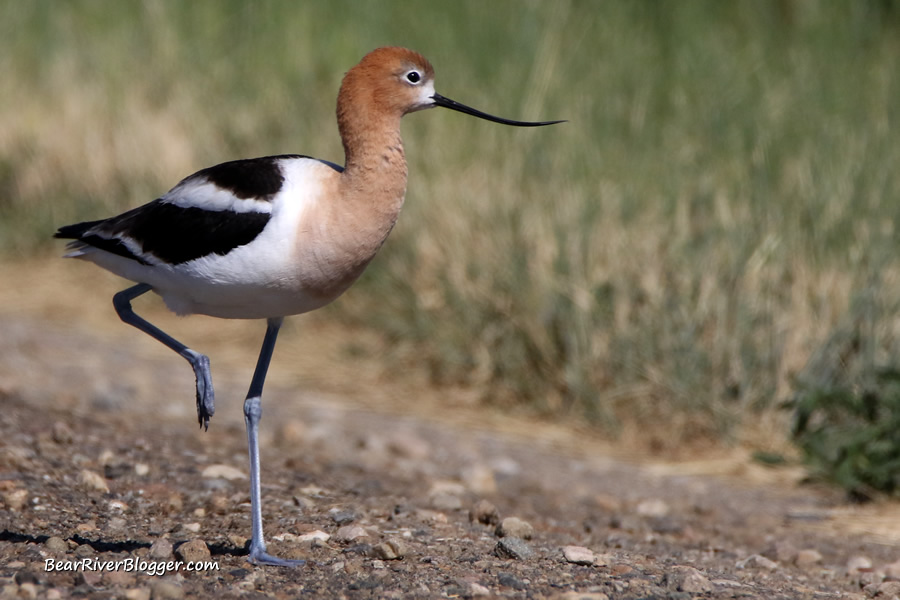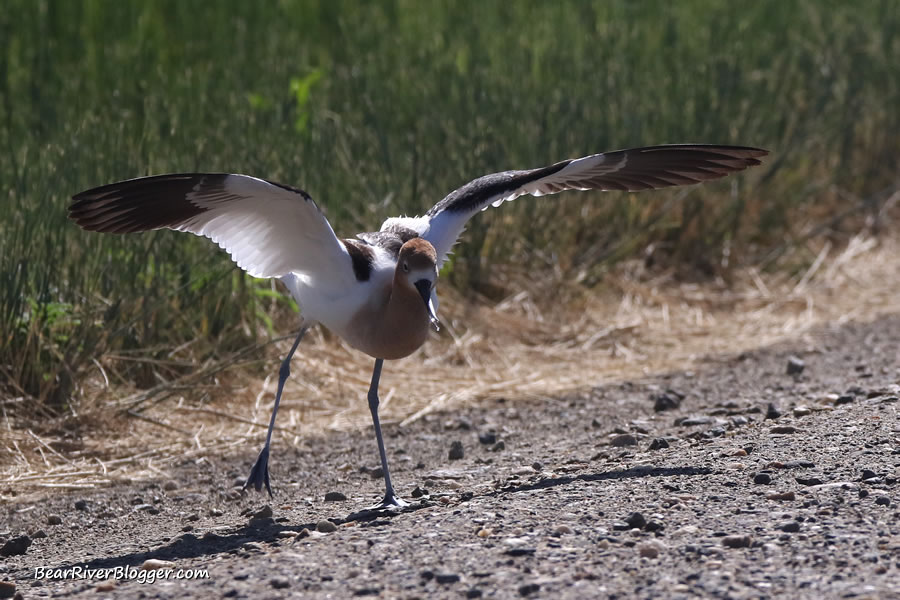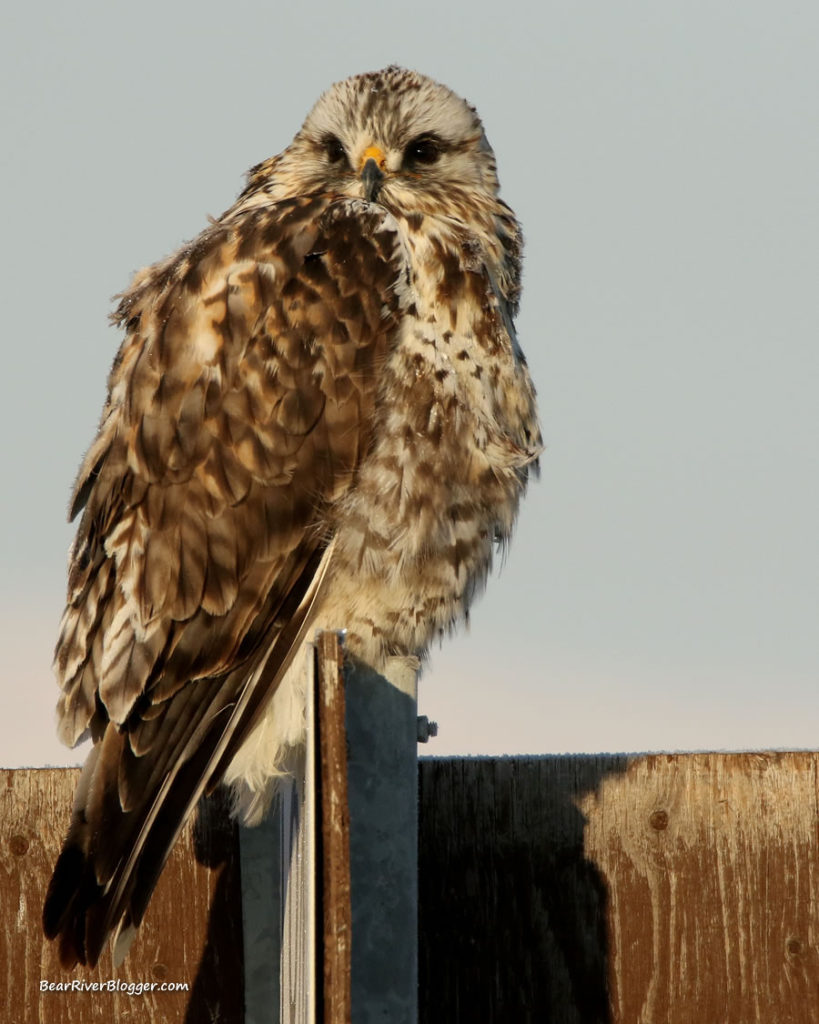Even though the official start of summer is still 4 days away it’s already summer-like conditions on the Bear River Migratory Bird Refuge auto tour route as baby birds are now hatching and showing up in various places on the gravel roadway.
This morning, in fact, I took a quick birdwatching trip around the auto loop and came across numerous American avocets tending to their newborn chicks, both on and near the auto loop.

In a couple of spots avocets were boldly giving me the ‘injured bird’ or ‘broken wing’ routine so I knew there had to be baby avocets stowed away somewhere nearby in the tall roadside grasses.
American avocets, as with many other species of birds, will show the injured bird routine by being very vocal and acting as if it can’t fly to lure predators and other potential harm away from nearby nests and baby chicks.
It’s a sure tell-tale sign there are baby birds or a nest close by and that you are getting too close.
The injured bird routine is also a signal for you and me to back off a bit and give the birds their well-deserved space.
On my way around the refuge auto loop this morning I found a couple of instances where American avocets were doing the ‘broken wing routine’ while I was slowly approaching in my car.
These brief encounters gave me an opportunity to capture a few images, from inside my vehicle, of course, of the situation to help show others what the injured bird routine looks like.
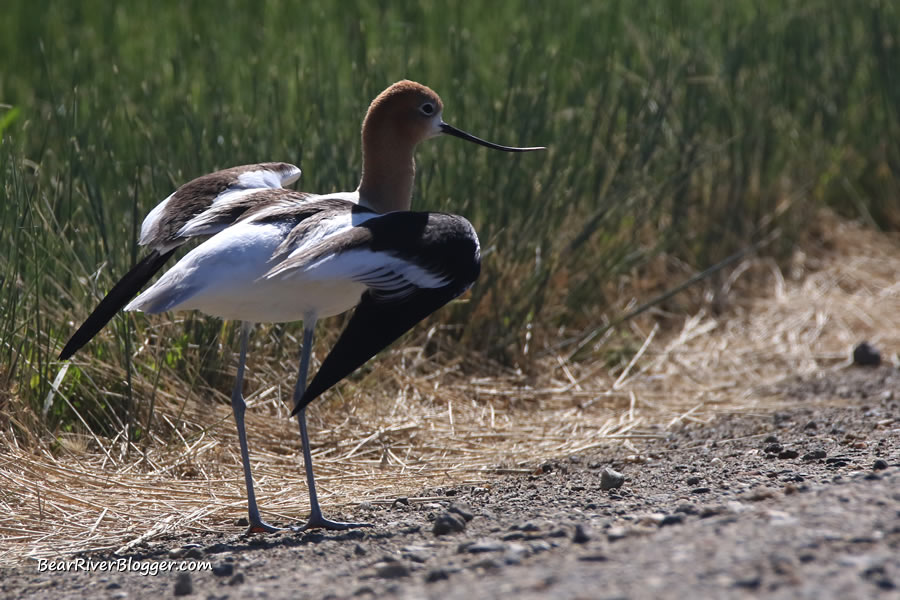
Simply put, when an adult bird acts like it can’t fly with what looks like a broken wing while being very vocal and purposely keeping a short distance from you, that is what the injured bird routine looks like and is their way of letting us birdwatchers know we are, in fact, much too close.
The injured bird routine is both appealing to predators looking for a quick meal and enticing to us humans that want to help the seemingly injured bird as well.
In both instances, the bird is trying to lure us away from a nearby nest or a clutch of young chicks by acting hurt and appearing quite vulnerable but be rest assured it is just an act of protection for their new family stationed somewhere close by.
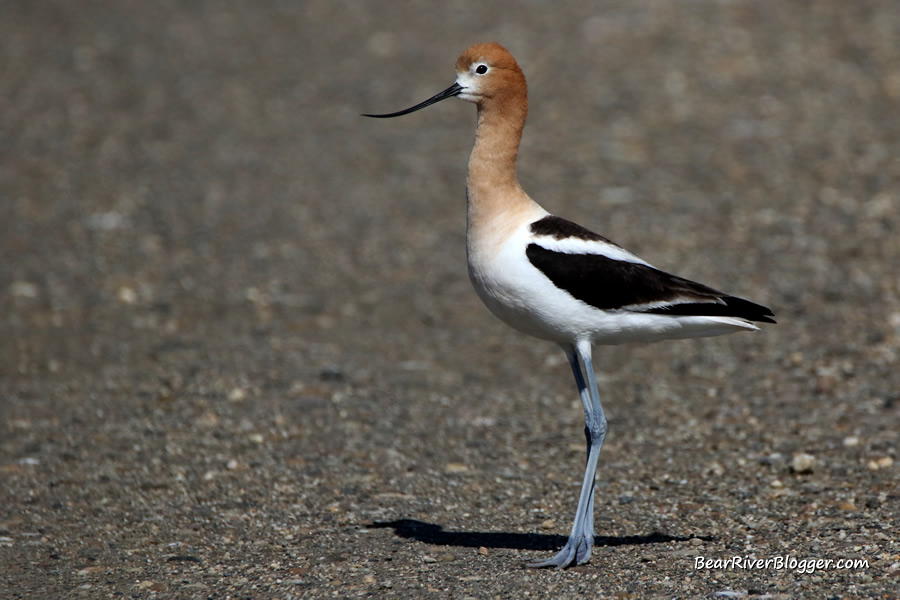
If you come across an avocet or any other bird acting like this, never try and catch it and never, ever go and look for the nest or the baby chicks but rather back off and enjoy the bird from a distance knowing there is another generation of these beautiful creatures somewhere nearby for future years of birdwatching to enjoy and photograph.
During the early summer months of June and July on the Bear River Migratory Bird Refuge baby birds such as American avocets, among a few others, are commonly found standing on or very close to the auto tour route so keep an eye out as you drive the loop and enjoy them from inside your vehicle and from a safe distance.
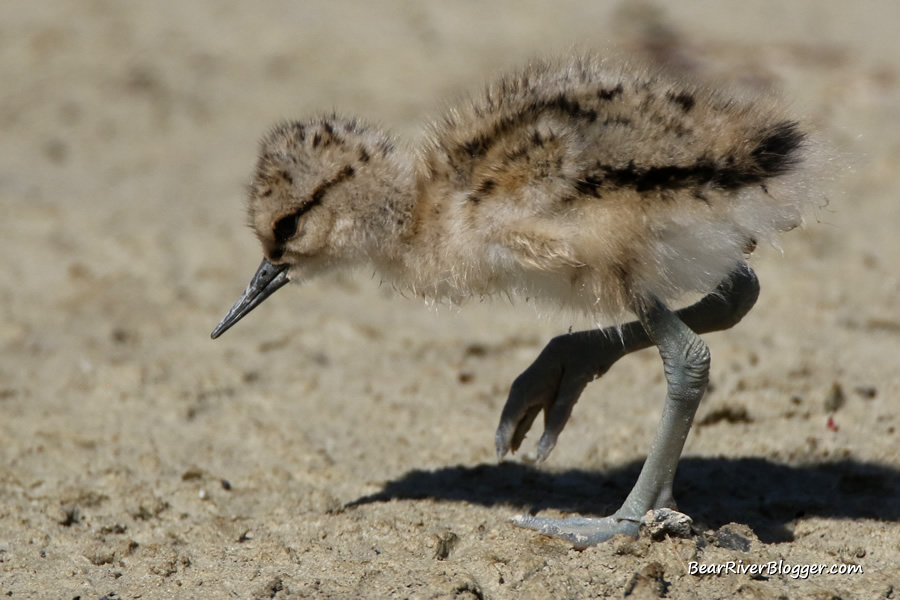
I am fortunate to have a 600 mm lens for my camera so capturing images of birds like this from a respectable distance in what can be termed as a ‘sensitive situation’ is very easy to do while giving the birds their due space at the same time.
Anytime there are nesting birds or baby chicks involved it is a sensitive situation and should be taken as such by giving the birds a safe amount of room whenever possible.
Unfortunately, there is no actual calculated distance for situations such as this but we can usually get a good idea by how the bird is acting if it feels threatened or not.
The injured bird routine, also commonly referred to as the ‘broken wing routine’ is, by the way, a surefire signal from the bird letting us know it does indeed feel threatened and we are too close to something nearby it wants to protect, either a nest or chicks, and we should back off to a distance where the bird settles down again.
Birdwatching and photography are great ways to enjoy nature but we also need to respect the birds we love to watch and photograph as well.
If you are a birdwatcher like I am, I offer you to head on over to our subscribe page and sign up for email notifications for future blog posts like this one where we photograph and write about our excursions on and off of the famed Bear River Migratory Bird Refuge.
(American Avocets Resting and Feeding. For short nature clips like this one and interesting stories about the natural world around us, check out our Bear River Blogger channel on YouTube for videos and updates from our travels while out in nature.)
